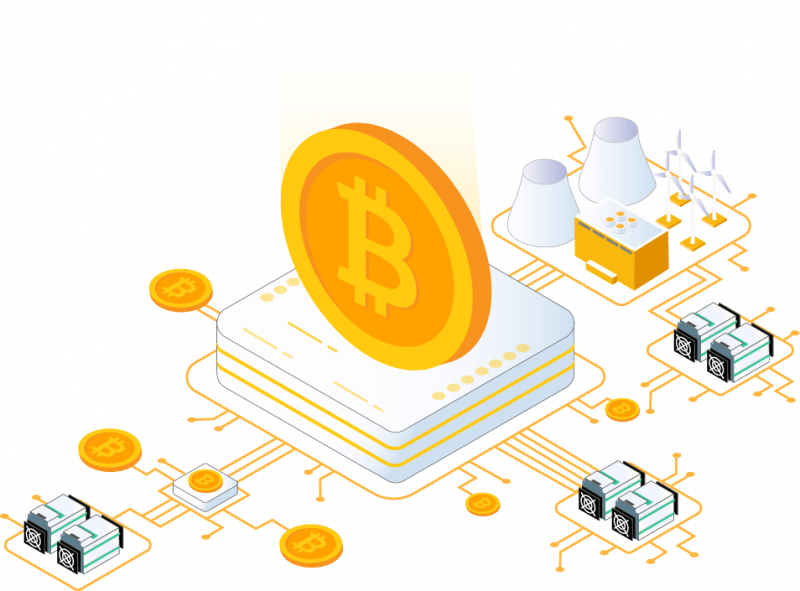How Bitcoin mining works
For each block produced miners receive transactions fees and block rewards by the Bitcoin blockchain
Electricity and buying the mining super computer equipment are the main costs for the miners
On average new blocks are produced every ten minutes

How Bitcoin mining works
-
Bitcoin transactions are grouped in a block
-
The new block of verified transactions is connected to a chain of previous blocks
-
For solving the block, the miners are rewarded with Bitcoins by the blockchain
-
Once the block is formed, miners compete
to solve it -
After it is resolved, the transactions are verified by the network
Bitcoin mining risk factors
Price Volatility: The price of bitcoin is highly volatile and can fluctuate wildly. This means that the value of the bitcoin rewards earned by miners can vary greatly, making it difficult to predict profits accurately.
Competition: As more miners join the network, the competition for solving blocks increases. This can make it harder for individual miners to earn rewards, especially if they do not have access to the most powerful and efficient hardware.
Mining Difficulty: The difficulty of mining adjusts every 2016 blocks, making it harder to solve the mathematical puzzles required to validate transactions and earn rewards. This means that even if a miner has access to powerful hardware, they may not be able to solve blocks quickly enough to stay profitable.
Electricity Costs: Bitcoin mining requires a lot of electricity, and the cost of electricity can vary greatly depending on location. If electricity costs are too high, it can significantly eat into a miner’s profits.
Hardware Failure: The specialized hardware used for bitcoin mining can be expensive and prone to failure. If a miner’s hardware fails, it can be costly to replace, and they may lose valuable mining time and rewards.
Network Attack: The decentralized nature of the bitcoin network makes it vulnerable to a 51% attack. If a single entity or group of entities controls more than 50% of the network’s computing power, they could potentially manipulate the blockchain and double-spend coins.

